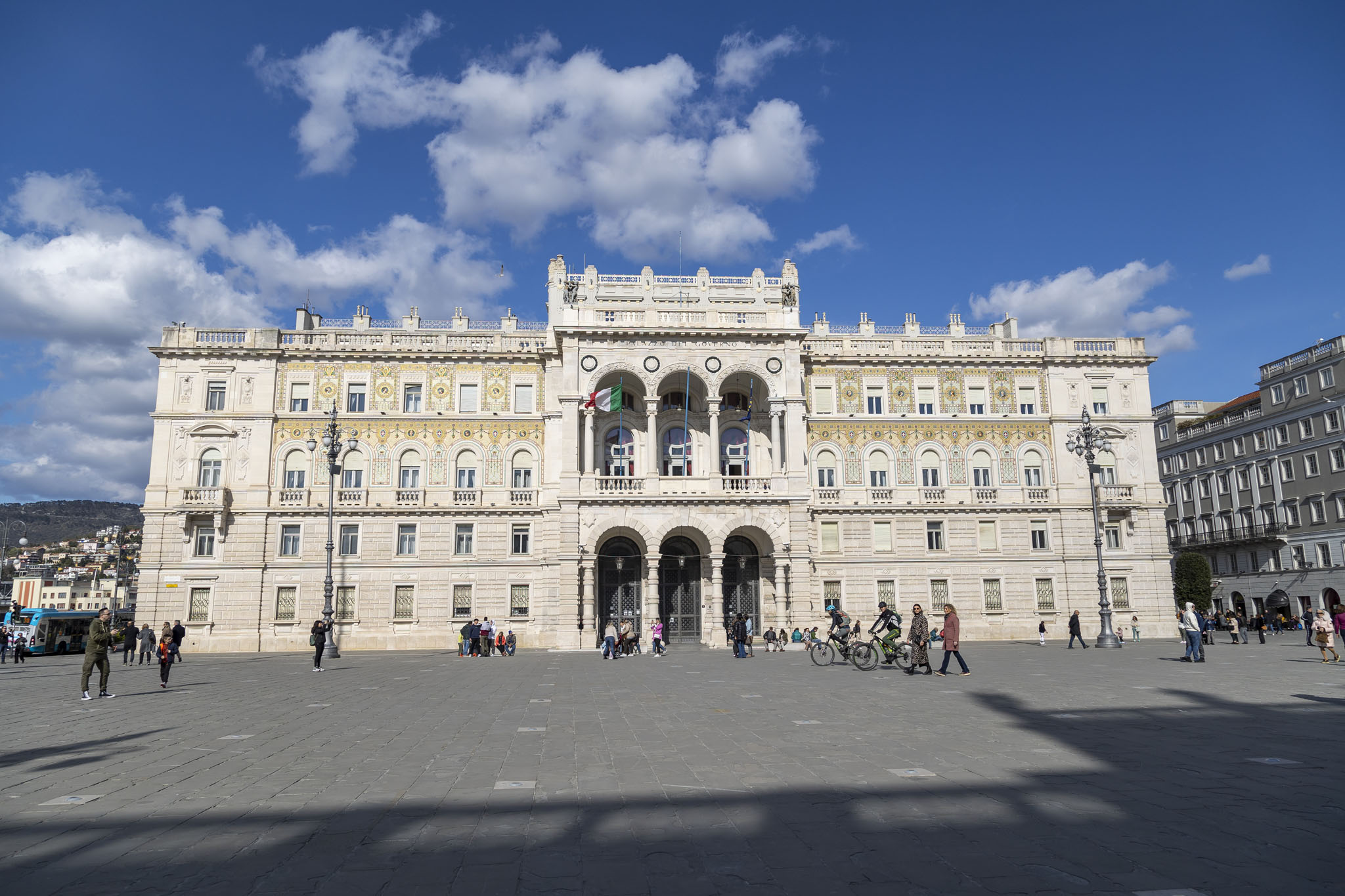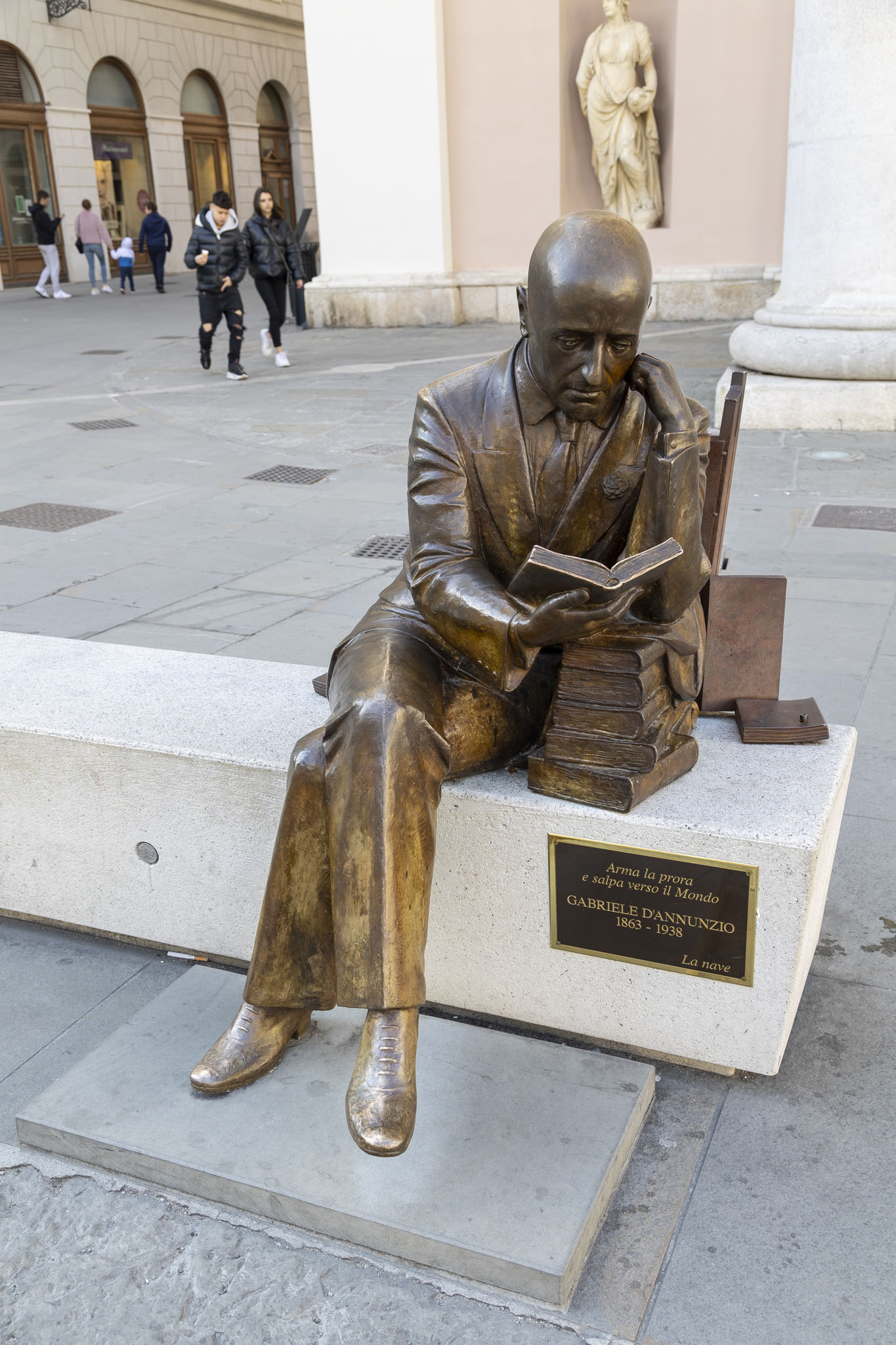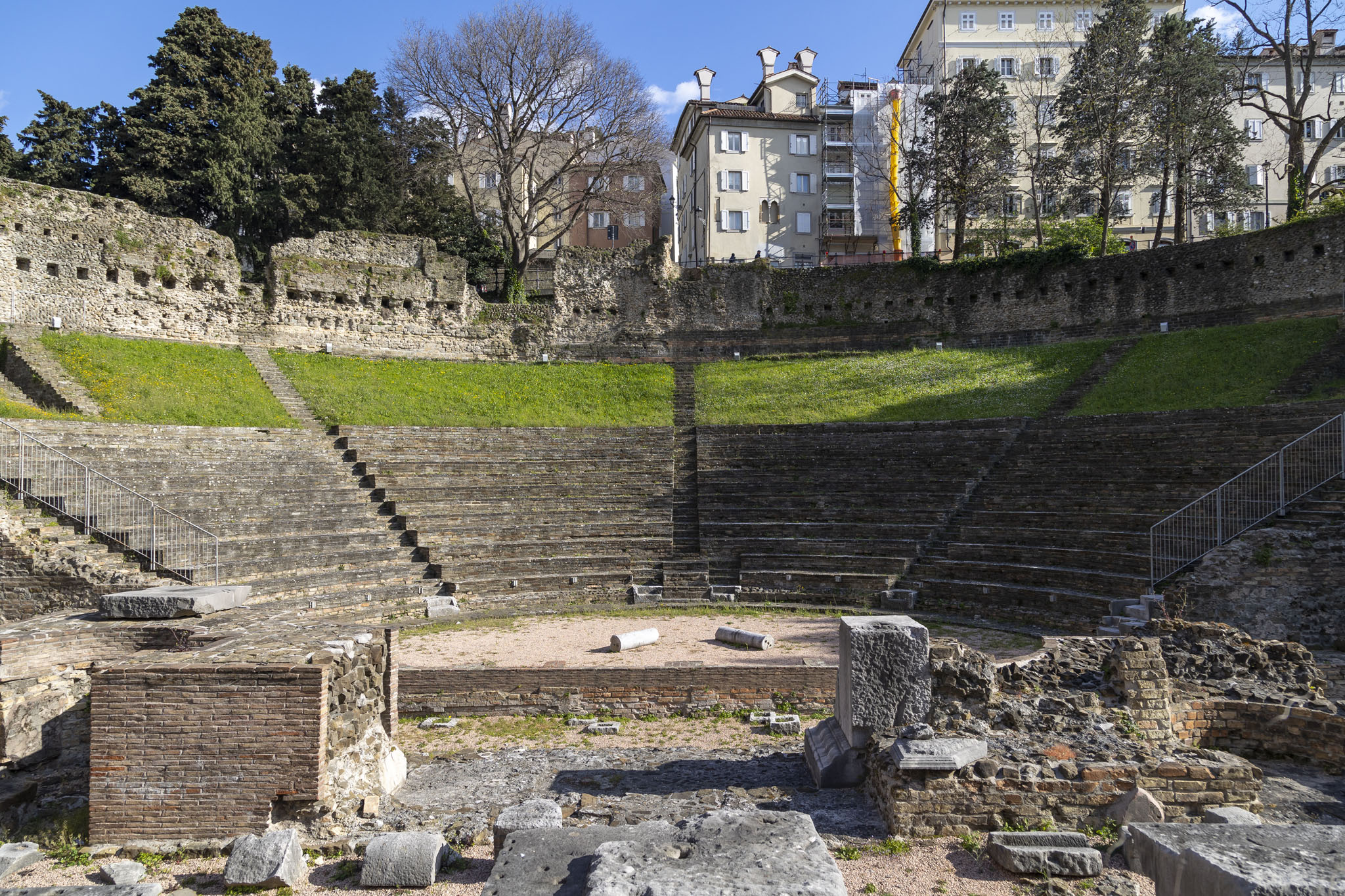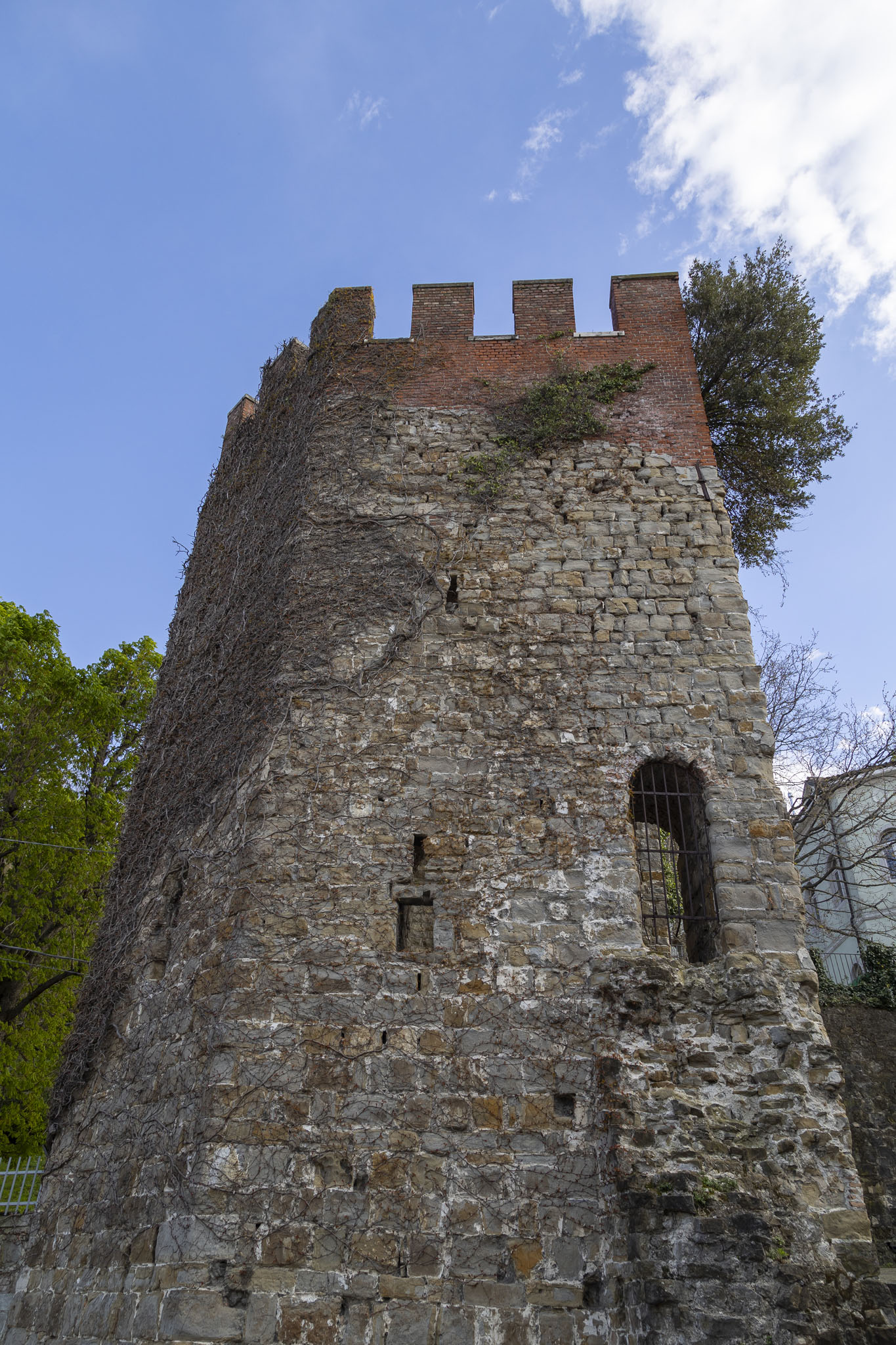We’d been led to believe from some information passed our way ahead of Azura docking in Trieste that Trieste itself – any bits you’d typically want to see as a tourist – was a pretty fair distance away from where the ship would be; enough so that shuttle bus tickets could be purchased to take you the twenty or so minutes to there. This was disappointing to us because, although we’d had an excursion booked into Slovenia (and you can see what we got up to in the capital, Ljubljana, here, if you’ve not done so already) it would have been nice to have had a quick look around an Italian port we’d not visited before. Twenty minutes by shuttle bus clearly meant far longer on foot – especially for us; we’re slow and one of us gets a bit camera-happy when the mood takes him – and we suspected that wouldn’t leave us much time to appreciate whatever Trieste had to offer.
Oh well, we thought, you can’t have everything; and thought no more of it.
Getting off the bus after our return from the excursion to see Lake Bled we started to head towards Azura, looking gorgeous in the Italian sunshine (a big change from the overcast conditions and drizzle that had been with us earlier in the day).
“Oh, if anyone’s not been to Trieste before,” said our guide as we were stepping off the bus, “then it’s well worth a look around. You’ve got a few hours until the ship leaves.”
“We thought it was quite far away,” we replied.
“It’s there,” the guide mentioned, pointing over our should and down the road. “There’s a public square right there, about a hundred metres away.”
Well, lesson learned there that it’s always worth checking an actual map at some point and maybe even opening your eyes and looking around, because, yes, we were a very short walk indeed from what would turn out to be lots of fantastic architecture, statuary, and historical ruins, not to forget loads of cafés and bars and just great views too. A very fortunate interaction with the guide otherwise there’s a good chance that we’d have followed the majority of the rest of the tour group back to the ship. As it was, I think six of us turned around and headed across the road to look at the city.
A minute or two later, we found ourselves in Unity of Italy Square (Piazza Unità d’Italia), considered to be Europe’s largest public square next to the sea – which sounds like one of those made-up categories just so you can be first in it – and occasionally the venue for music performances in addition to serving more political roles hosting world leaders.
Surrounding the square were impressive-looking buildings including City Hall but the only feature within it was a fountain. This was the Fountain of the Four Continents, constructed in the middle of the eighteenth century and showing off Trieste’s importance as a trading seaport by representing Europe, Asia, Africa, and America with sculptures within the pool area of the structure, and representing four major rivers in the way water was delivered to the pool. The fountain has been affected by history, surviving an attempt to remove it entirely in 1920s, then actually being removed ahead of World War II so that Mussolini could use more of the space to compensate for this tiny fascist penis, being returned in 1970, being moved to its original (and current) location at the start of the new millennium, then becoming subject to attacks by small-minded vandals in more recent times.
Obviously, we didn’t have any plans about what we wanted to see and so to start with we picked a direction at random and started walking. This brought us past the opera house into Piazza Giuseppe Verdi initially then along to a statue of Gabriele D’annunzio. He was quite the character and well worth reading about on that link; suffice it to say that he was associated with decadence and occasionally occultism, and a poet, journalist, playwright, army officer in World War I, had argued in favour of Italy siding with France and the UK against Germany, became a fighter pilot, and was ennobled as the Prince of Montenevoso. We’d passed buildings of some unknown importance and grand architectural design on the way, including the Meridiana Interattiva set into the ground floor of the Palazzo della Borsa; this was a twelve-metre-long sundial marking used by ships to set their marine clocks when arriving at Trieste. We also came across another fountain, this to the Roman god Neptune, and as keen sea-goers it’s always nice to see something like that.
The Leopold Column commemorates a visit to the city of Trieste in 1660 by Leopold I, the Holy Roman Emperor.
We took a moment at this point to actually take a look at the map and see if there was anything we particularly wanted to see nearby now that we actually had a chance to look around Trieste.
“There appears to be an amphitheatre just around the corner from here,” I told my wife. As you might be able to tell, we like seeing amphitheatres when we travel.
“It’s not going to be like Chester, is it?” she asked. That had been surprisingly naff, to be fair.
“There’s only one way to find out.”
Trieste has been inhabited for several millennia, firstly by Illyrian tribes, then into the second century BCE becoming incorporated into the Roman Empire. Naturally, therefore, Roman ruins exist because the Romans built pretty well, and the amphitheatre we found ourselves in front of a couple of minutes later dates from very late in the first century CE, likely around the time of Trajan’s rule. The hilly landscape just back from the coastline acted as a natural support for the amphitheatre’s sloping seating.
After we’d admired the ruins for a short period we checked the map once again and spotted a tower and a castle relatively close by. However, while the map wanted to keep it a surprise, we could tell that this would involve some increase in elevation as our eyes could see buildings raised up from where we were in the direction we’d need to take; that hilly landscape I’d just mentioned. We are not particularly fit people anyway, but one of us also carries a long-standing injury that makes climbing up steps painful so this wasn’t a decision we took lightly, but we figured that we could take it at our own pace, rest often, and just see how we did.
The walk up was not particularly thrilling or enjoyable but we reasonably soon reached the Tor Cucherna, a medieval watchtower dating to the fourteenth century and positioned along the city walls that existed at that time. In 1719 Trieste became a free port and the city’s expansion that this required necessitated the destruction of almost all those fortifications, but the tower survived as it had found a use as a house. Fairly interesting history-wise but I wouldn’t say it’s something you should go out of your way to see.
Continuing upwards we reached the highest point where the Castello di San Giusto was located. With absolutely no research beforehand we hadn’t known what to expect and if it had looked small enough then we might have taken a look around, but we quickly realised there was a lot more here on this plateau overlooking Trieste and that to really do it justice we’d need to come back and dedicate more time to this spot. That’s what we intend to do if we’re ever on a cruise that makes a stop in this part of Italy in the future.
The castle was constructed over the course of a couple of hundred years from the middle of the fifteenth century onwards and many aspects of its design reflect whatever was typically regarded as the best defensive shape for the period in which it was being built. The rounded bastion comes from the Venetian period of the early sixteenth century while some straight-edged examples can be dated later in the century and into the next.
A monument to fallen soldiers stood at the end of a tree-lined space, itself next to ruins of a Roman forum beside the castle. Completing the sites of interest on this hill in Trieste was a medieval cathedral too, apparently known for mosaics and frescoes. This will definitely all be on our list to visit when we inevitably return to Trieste.
We decided we’d walked around enough for the day and made the decision to head back towards the ship. At least it would be mostly downhill, although in parts no less easy to negotiate than coming up for my wife. Everywhere we seemed to look there was something to catch the eye.
It wasn’t long before we were back in front of Azura, ready to take the weight off our feet, freshen up, and maybe treat ourselves to some refreshments. Looking around Trieste had been a bonus for us on this day and the perfect sort of one that makes you want to come back for more. You get a feel for a place, and Trieste really rates right up there in terms in favourite places in Italy just from the small amount of time we had in the city.
At the cruise terminal entrance we spotted a final statue on this day that had featured many of them. This was to Nazario Sauro, recognised as a hero in Italy for his actions in the navy during World War I.
In the next post in this Azura cruise travelogue series we’ll enjoy some time on the ship in the port waiting to leave Trieste.



































